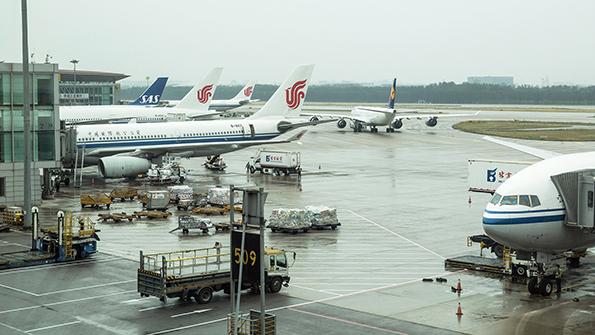
Airlines are aiming to ramp up services to Beijing Capital International Airport and other Chinese cities.
While the Chinese government has begun the process of dismantling most of its COVID-19 travel restrictions, the rebound in Chinese international flows could be hindered by cautious policies in many other countries.
For several months, one of the main questions facing the Asia-Pacific region’s airline industry has been when China would remove its onerous constraints on international travel. Most predictions were that China would only ease these measures gradually through the course of 2023. However, the government has moved much more quickly than expected.
- Airlines are planning to add back capacity on China routes
- Some countries are reintroducing COVID-19 tests or limiting flights
Chinese authorities said they would begin removing most inbound and outbound travel restrictions Jan. 8. While it is still uncertain how rapidly some of these changes will be implemented, the government obviously intends to move toward a full reopening.
But the surge in COVID-19 infections in China means many countries are introducing their own limitations for travelers entering from that market. These comprise predeparture or arrival testing in some cases, while a few countries are capping frequencies on flights from China. Overwhelmed airport facilities in many countries are another factor that will limit traffic recovery on China routes.
China has been one of the most conservative countries in terms of restoring international air services. As of the week of Jan. 9, China’s international seat capacity was at just 10.3% of pre-pandemic levels, according to data from the Aviation Week Network’s CAPA – Centre for Aviation and OAG (see chart).
However, there has been some movement recently. Capacity on China routes rose through the second half of 2022, particularly from around November (see chart). This was a result of slight government easing of flight limits.
There should be a much steeper rise through the first half of 2023, as airlines add back flights in response to the latest Chinese government moves.
Many carriers, both in China and overseas, have already scheduled new services. In one example, Cathay Pacific has announced plans to more than double its weekly flights between Hong Kong and the mainland starting Jan. 14.
Such moves have been prompted by a raft of COVID-19 changes announced on Dec. 26-27. The Chinese government dropped all quarantine requirements as of Jan. 8, although a predeparture COVID-19 test is still needed. Airline flight and load-factor caps were also abolished.
The government announced it will restore processes for outbound travelers to apply for passports and authorizations to travel overseas. It said it will resume reissuing visas and entry permits for overseas inbound travelers and will reinstate its transit-visa waiver program.
However, some travel categories may not be fully opened immediately. For example, inbound tourism is likely to be resumed gradually.
With many of its domestic COVID-19 restrictions relaxed, infection numbers have soared in China. This trend probably will continue well into 2023.
The spike in COVID-19 cases has caused many governments to reintroduce predeparture test requirements for travelers entering from China. The EU has recommended that all of its member states take this approach.
The exact requirements differ. Certain countries require a test on arrival as well as before departure. Some are including Hong Kong and Macao in their China testing requirements. Other measures also have been implemented, such as testing of wastewater from aircraft on China flights to check for new COVID-19 variants.
In terms of operational restrictions, some countries such as Japan and South Korea are requiring airlines to hold China frequencies at current levels with no new additions. Flights from China also will be limited to selected gateway airports. South Korea has restricted some visa issuance for Chinese travelers as well.
These approaches have been criticized by the Chinese government, and it has taken steps to respond in kind. For instance, China has halted the issuance of many types of entry visas for South Korean and Japanese applicants.
Singapore is an example of a country wary of increasing China flights too quickly. The Singapore government said it is monitoring the COVID-19 developments in China and elsewhere to see it if needs to change its entry policies. “As air travel with China is progressively restored, we will take a cautious approach toward increasing seat capacity, taking into account the overall public health assessment,” the Singapore health ministry said on Dec. 30.
The International Air Transport Association (IATA) is urging governments not to proceed with the testing and other restrictions for travelers from China. IATA Director General Willie Walsh says it is “extremely disappointing to see this knee--jerk reinstatement of measures that have proven ineffective over the last three years.”
IATA also has called for the Chinese government to remove its predeparture testing measures, although the industry group welcomed China’s recent announcement that it will end other travel restrictions.





